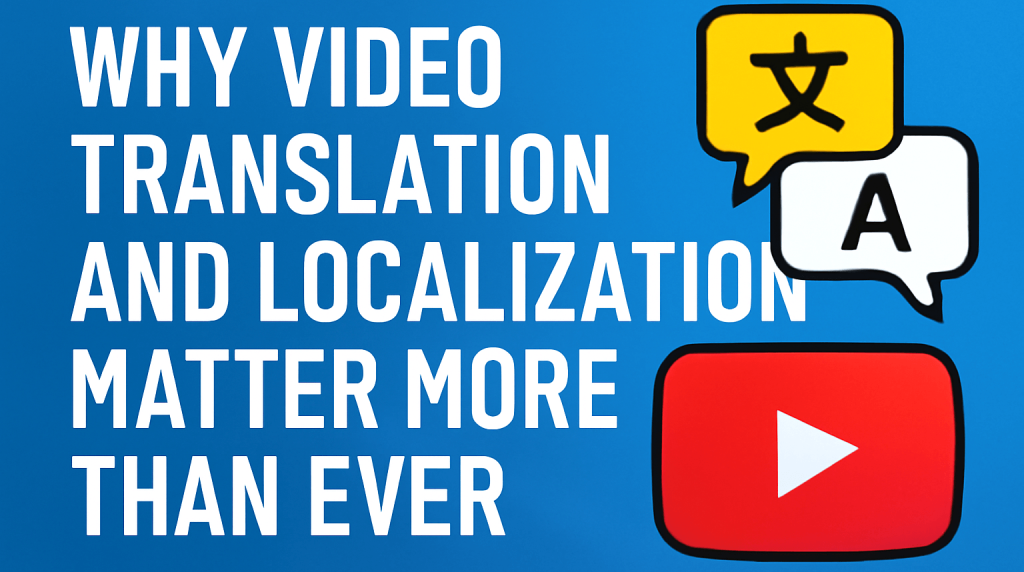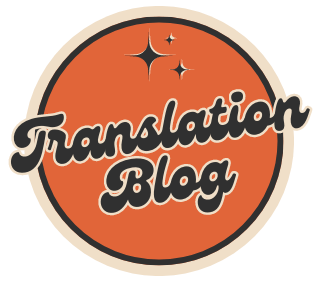If you’re a creator trying to grow on YouTube, one of the fastest ways to reach new viewers is simple: translate YouTube videos. That’s not an exaggeration. Today’s online audience is global. English might be the most common language on the platform, but it’s not the only one that matters. Millions of people speak Spanish, Hindi, Portuguese, Arabic, and other major world languages—and they’re hungry for content they can understand.
Video translation and localization don’t just increase your reach. They increase your watch time, engagement, and retention. They also boost your search visibility in multiple languages. If you’re not translating your content, you’re leaving huge opportunities on the table.

Why Translation Isn’t Enough
There’s a big difference between translating a video and localizing it. Translation is just step one—it converts your original script into another language. Localization takes it further. It adapts the content so it fits the culture, humor, slang, and expectations of the new audience.
Say you’re a gaming creator using English idioms and memes. A direct translation into Korean might confuse viewers. Localization would swap those references for ones Korean viewers understand. It makes your content feel native. That connection keeps people watching longer.
Real Impact on Engagement
Localizing your videos can lead to measurable gains. YouTube’s algorithm rewards engagement: likes, comments, shares, and watch time. When viewers understand your content and relate to it culturally, they’re more likely to stick around. They might even subscribe.
Look at creators who have added subtitles, dubs, or region-specific versions of their videos. Many report spikes in non-English traffic, longer viewing sessions, and better ad revenue. In some cases, localized channels outperform the originals.
Subtitles, Dubbing, or Full Localization?
Each method has pros and cons. Here’s a breakdown:
-
Subtitles: Fast, cheap, and great for viewers who can read quickly. They let you keep your voice, which helps with brand identity. But some people don’t like reading while watching, especially for fast-paced or visually dense content.
-
Dubbing: More immersive. It removes the language barrier and doesn’t distract from the visuals. But it costs more, especially if you want professional voice actors and synced audio.
-
Full Localization: The most in-depth. This might include rewriting jokes, changing visuals, re-editing scenes, or even reshooting parts. It’s ideal for big-budget creators or brands targeting specific regions.
The right option depends on your budget, audience, and goals. For many YouTubers, a mix of subtitles and selective dubbing hits the sweet spot.
What Languages Should You Translate Into in 2025?
Choosing the right languages is key. Go where the growth is and where demand outpaces supply. In 2025, these are your top bets:
-
Spanish – Over 500 million speakers. Huge YouTube audience in Latin America, Spain, and the U.S.
-
Hindi – India is one of YouTube’s largest and fastest-growing markets.
-
Portuguese – Brazil is a massive, engaged audience with high video consumption.
-
Arabic – Millions of users across the Middle East and North Africa.
-
Indonesian – Rapidly expanding internet user base and a high appetite for online content.
-
French – Spoken across Europe, Africa, and parts of Canada.
Your audience data can guide your choices. Use YouTube Analytics to see where your viewers come from and what languages they speak.
What Tools and Services Can Help?
You don’t have to do this alone. Several platforms specialize in helping creators localize content at scale. Services like ScaleLab offer tools to translate YouTube videos and optimize them for a global audience. Whether you need subtitles, dubbing, or full localization, the right service can handle it for you, fast and accurately.
There are also AI-powered tools for auto-translation and captioning. They’re useful, but always review their output. Nothing beats a native speaker for nuance and tone.
Final Thoughts
Video translation and localization aren’t just “nice to have” anymore. They’re essential. They turn your content into something global. They help you connect with more people, across borders and languages. And they can transform a mid-tier channel into an international hit.
If you’re serious about growth in 2025, don’t limit yourself to one language or one audience. The world is watching. Make sure they understand what you’re saying.

